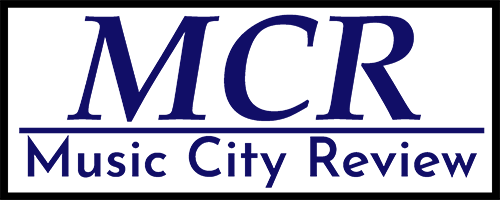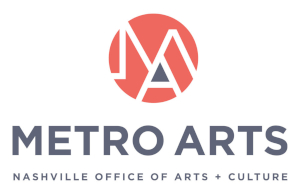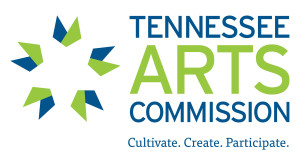From the Nashville Chamber Music Society
Underwood and Friends Take Us to Church
Titus Underwood & Friends presented a unique opportunity for me as a brass musician to expand my horizons: Can I, a lowly trumpet player, ‘neath the booming vaults of a European-style sanctuary, be convinced that an oboe, some strings, and a mini grand piano can provide a rapturous experience comparable to a setting of Gabrieli? Of Haydn? Of Hummel? Well…when Titus is involved…yeah!…
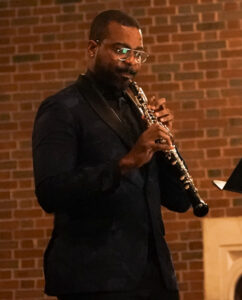
Michael Daugherty’s Six Riffs After Ovid (2021) opened the evening’s concert, showcasing Underwood’s superb mastery of extended techniques as well as his charismatic capabilities (a mere glimpse of the night to come). The piece presents a truly fascinating concept. Based on The Metamorphoses by the Roman poet Ovid, it is a collection of six small “character” studies which capture the personalities and styles of famous modern musicians while also equating them to chosen mythological counterparts. It ranged from rapid and mischievous frivolity to soulful, yet bright passages. The star of the collection was certainly the fifth movement “Prince (Narcissus).” While not necessarily reminiscent of Prince in the expected way (seeming more attuned to the ‘Narcissus’ part of the title with its pluckier temperament), the technique which Underwood used towards its end was rather remarkable, both in its sound and execution, invoking a wailing, raunchy electric guitar. Even now, I am still befuddled as to how exactly he did it. I’ll have to inquire with my oboist friends so that I might incorporate it into my own work, though I wonder how many oboists out there can interpret it with such power as Underwood did.
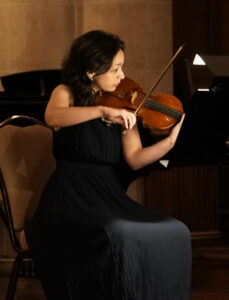
Mozart’s Oboe Quartet in F Major (1781) was the night’s first selection with a small ensemble – certainly a stark contrast to the modernity of the opener and its many tricks. How did it fare? The ensemble’s control over the work and their individual balance were quite impressive and appropriate for the task, a feat not so easily achieved in a sanctuary of such caliber as the Wightman Chapel. The poise, longing, and unabashed joy within the work were all well-realized and screamed “MOZART” through and through. But the most important fruits of their labors came from the subtle, synchronized swaying of audience members as they emulated the impassioned motions of the players. Bravo to any musician that achieves this in their art!
My favorite selection of the night was Samuel Coleridge-Taylor’s Five Negro Melodies for Piano Trio (1906), a work derived from his 24 Negro Melodies, Op. 59, which was composed after hearing the Fisk Jubilee Singers in London. Following this, he sought to learn more about African American heritage (into which his own father was born) and how to incorporate it into his own work. Five Negro Melodies presents astonishingly beautiful renditions of folk songs and spirituals that are portrayed with great care and respect; it did not attempt or seem to prioritize extravagance with any of its parts, instead elaborating upon the incontestable emotional fiber intrinsic to the source material. This same care and understanding was certainly taken by the performers. Immediately following the piece’s first movement, a collection of audible approval could be heard, acknowledging not only a well-structured and satisfyingly conclusive movement, but also the emotionally profound and deeply “felt” melody within.
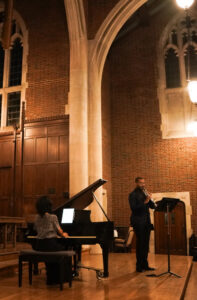
A primary subject of fascination with this concert came from the showcasing of virtuosity with the oboe and how the boundaries of playing technique have been pushed over the past 300 years, especially considering with what fear pieces like Mozart’s Oboe Quartet were treated by players of the day. Witnessing these techniques be harnessed with such precision and respect is a testament to Underwood’s deep technical and intellectual prowess.
I have long admired him and his stellar career with the NSO, so I was more than eager to seize the chance of experiencing his talent in its ultimate, most pure form with this concert. The Nashville Chamber Music Society, however, had eluded me until that night. Yet their well-made programs, quality merchandise, and impressive partnerships made for a solid first impression (not to mention, their refreshments were quite wonderful, especially the quiches!). Congratulations and a “well done” are certainly deserved for this one – for everyone involved! And nice choice of venue; it was all quite a religious experience, indeed…
